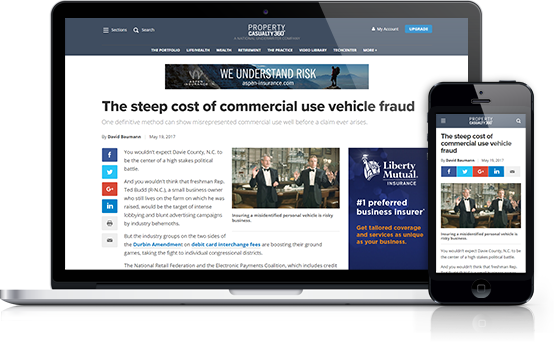 From customer service to marketing to sales forecasting, nearly every business function benefits from going digital. Insurance is no different. A recent report found that highly digital insurance agencies had a 70% greater growth rate than their less-digital counterparts.
From customer service to marketing to sales forecasting, nearly every business function benefits from going digital. Insurance is no different. A recent report found that highly digital insurance agencies had a 70% greater growth rate than their less-digital counterparts.
That’s why digitalization in areas like claims processing, underwriting, customer service and setting risk is increasing. But one area is still warming up to digital — premium payment processing.
That all may be changing, however. Agents can no longer ignore the significant gains brought about by digital payment processing — gains that can positively affect the trajectory of their business and contribute to an even higher growth rate. At the same time, newer technologies such as artificial intelligence and machine learning are helping make these processes more effective and secure.
Three benefits of digitalizing the agency-bill process
Agencies handle premium payments in one of two ways: direct bill and agency bill.
As its name implies, direct bill involves two parties only — the carrier and the insured. But agency bill is a much more complex process: The agent receives the payment from the insured, takes their portion and handles the accounting before sending the rest of the premium to the carrier. With agency bill, the accounting and logistics can be tedious and time-consuming, and physically moving money can introduce mistakes and inaccuracies, contributing to a high-stress situation.
By digitalizing the agency-bill process, three core value drivers emerge.
The first is an improved insured and customer experience. Insurance, in general, is experience-based, with agencies competing on the customer experience and their ability to build relationships, as policies themselves are fairly commoditized. Making the premium payment process more streamlined — say, with a one-click payment option when insureds receive their invoice — contributes to a better overall experience and gives the agent an edge over the competition.
The second value benefits back-office savings, specifically concerning invoicing and accounting. Processing physical checks involves actually receiving the check, manually coding it into the system, and then waiting for the bank to move the money. This process can take five to 10 business days from the time the insured’s physical check is placed in the mail until the money reaches the agency’s account. When the payment process is digitalized, a payment link is automatically generated and sent to the insured and the payment is auto-applied on the reconciliation side. Compared with manual invoicing and accounting, digital payment processing saves time and money spent, which benefits small and midsized agencies.
The third value supported by digitalization is security. There still exists concern around the security of digital payments, and, indeed, cybersecurity remains a top priority. Iin reality, however, digital payment processing is infinitely more secure than handling a paper check. Consider how much data resides on a paper check — account and routing numbers and personally identifiable information (PII) such as name and address. Add to this the number of people typically handling a paper check as it winds its way through the payment process and the possibility for fraud skyrockets. Conversely, modern payment processing is more secure than ever, as the digitalization of payment processing involves secure APIs, which block attempts to allow unauthorized users to hack their way in to steal sensitive information.
AI and digital payment processing
Artificial intelligence — machine learning, specifically — is finding its footing across industries, including insurance.
Today, carriers and agents use these technologies to generate insights from large data sets that help in decision-making, automate repetitive knowledge tasks and even identify fraud. In the context of digital payment processing, the use case for machine learning is in reconciliation. “Fuzzy matches” occur when payment received is slightly different in dollar value than what the agency expects. It accounts for a significant number of receivable-matching hours, as it requires humans to problem-solve and investigate to reconcile the different numbers.
By digitalizing payment processing, agents can apply machine learning to these fuzzy matches so they will be found, analyzed and reconciled automatically. It’s another way for agents to save.
Digitalization creates a competitive advantage
With the digital bar for agents so high and continuously rising, agents must keep pace with technologies such as AI and machine learning and apply those wherever possible to realize productivity and cost gains. While premium payment processing may be one of the last insurance functions to go digital, it’s certainly one of the most important with numerous benefits ranging from cost savings to better security.
Agents that adopt digitalization will be well-positioned to meet their growth goals and set themselves apart in a competitive industry.
To learn more about how Applied Pay’s advanced digital payments solution can optimize the collection experience for both you and your customers, contact an Applied Systems representative today.









 Copyright © 2024 ALM Global, LLC. All Rights Reserved.
Copyright © 2024 ALM Global, LLC. All Rights Reserved.